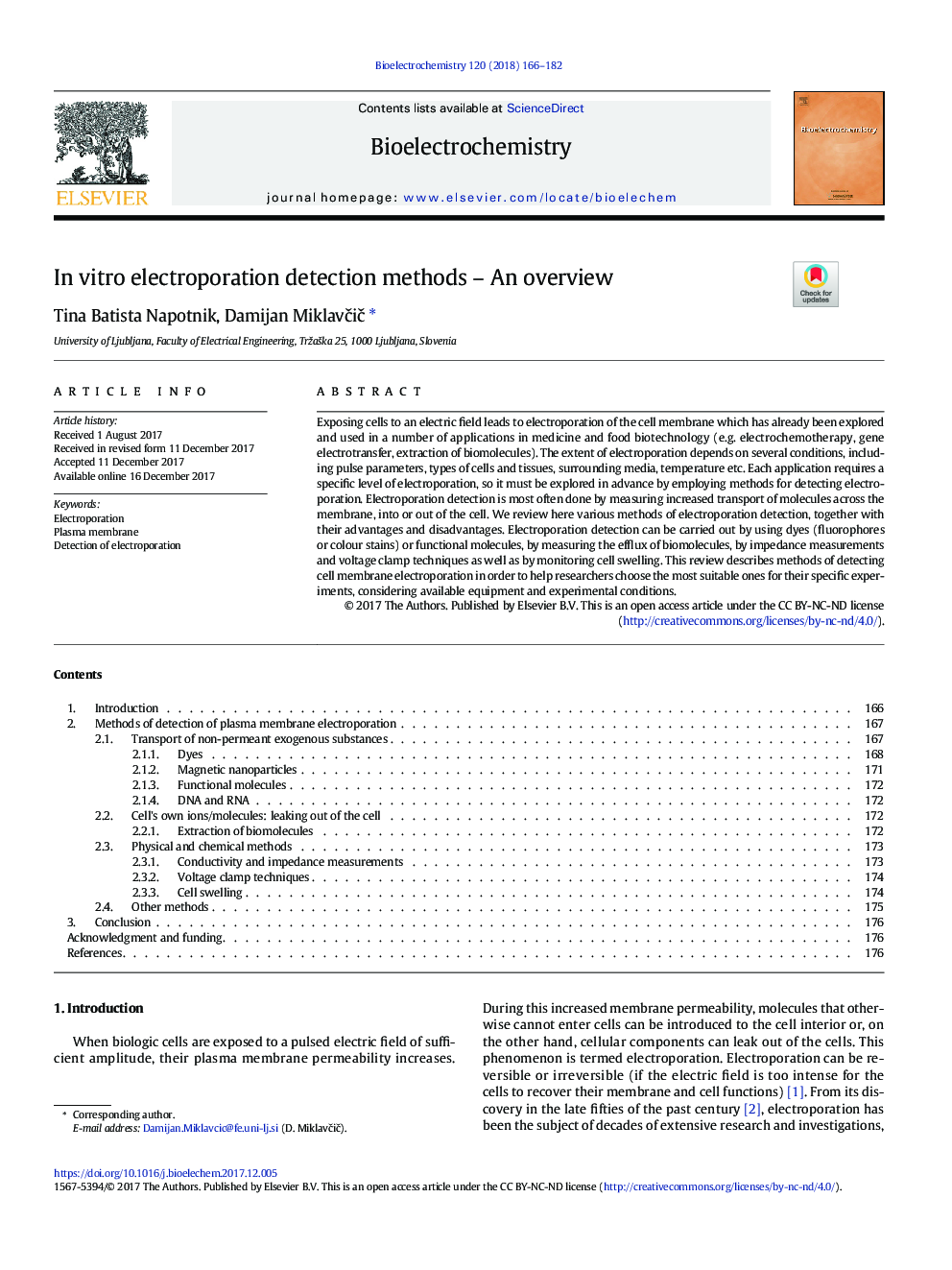| Article ID | Journal | Published Year | Pages | File Type |
|---|---|---|---|---|
| 7704581 | Bioelectrochemistry | 2018 | 17 Pages |
Abstract
Exposing cells to an electric field leads to electroporation of the cell membrane which has already been explored and used in a number of applications in medicine and food biotechnology (e.g. electrochemotherapy, gene electrotransfer, extraction of biomolecules). The extent of electroporation depends on several conditions, including pulse parameters, types of cells and tissues, surrounding media, temperature etc. Each application requires a specific level of electroporation, so it must be explored in advance by employing methods for detecting electroporation. Electroporation detection is most often done by measuring increased transport of molecules across the membrane, into or out of the cell. We review here various methods of electroporation detection, together with their advantages and disadvantages. Electroporation detection can be carried out by using dyes (fluorophores or colour stains) or functional molecules, by measuring the efflux of biomolecules, by impedance measurements and voltage clamp techniques as well as by monitoring cell swelling. This review describes methods of detecting cell membrane electroporation in order to help researchers choose the most suitable ones for their specific experiments, considering available equipment and experimental conditions.
Keywords
Related Topics
Physical Sciences and Engineering
Chemistry
Electrochemistry
Authors
Tina Batista Napotnik, Damijan MiklavÄiÄ,
